Ceramic cookware has recently gained popularity due to its excellent non-stick properties, durability, and heat distribution. Its composition allows for cooking with minimal oil, promoting healthier meals, and its smooth surface ensures easy cleanup. However, to maintain these benefits, it’s essential to understand how to season ceramic pan, especially if it’s new or the non-stick surface has begun to deteriorate. Seasoning a ceramic pan involves applying a layer of oil, which can enhance its non-stick capabilities and prolong its lifespan. This preventative measure helps protect the ceramic coating, ensuring consistent performance over time and can revitalize pans that have seen better days.
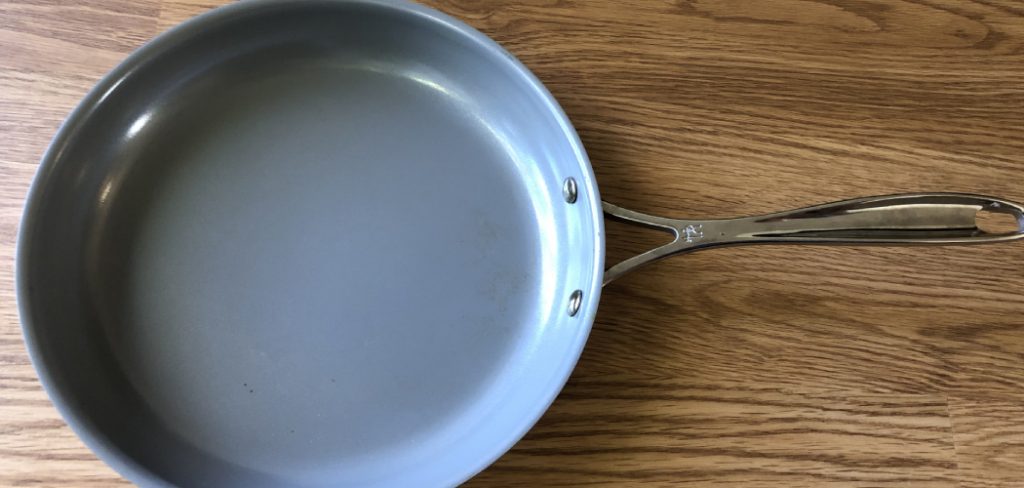
Materials You Will Need
To begin the seasoning process, you will need several items. First and foremost, a ceramic pan that is clean and free from any debris or food residue is essential. You will also require a high smoke point oil, such as vegetable oil, canola oil, or flaxseed oil, as these oils withstand high temperatures without burning. Additional items include paper towels or a soft cloth for applying and evenly distributing the oil over the pan’s surface. A stovetop or oven can be used to heat the pan during the seasoning process; the stovetop method is often quicker, while some prefer the oven for more heating. Lastly, mild dish soap is necessary to clean the pan before beginning the seasoning process.
Cleaning the Pan Before Seasoning
Wash with Soap and Water
Start by thoroughly cleaning the pan with mild dish soap and warm water. This initial step is crucial to remove any manufacturing residue or dust, especially if the pan is brand new. A comprehensive wash ensures that there are no contaminants that could interfere with the seasoning process.
Rinse and Dry Completely
After cleaning, rinse the pan well to ensure no soap residue remains. Then, dry the pan completely using a towel. Any moisture left on the surface can prevent the oil from adhering properly during the seasoning process, thereby compromising the effectiveness of the seasoning.
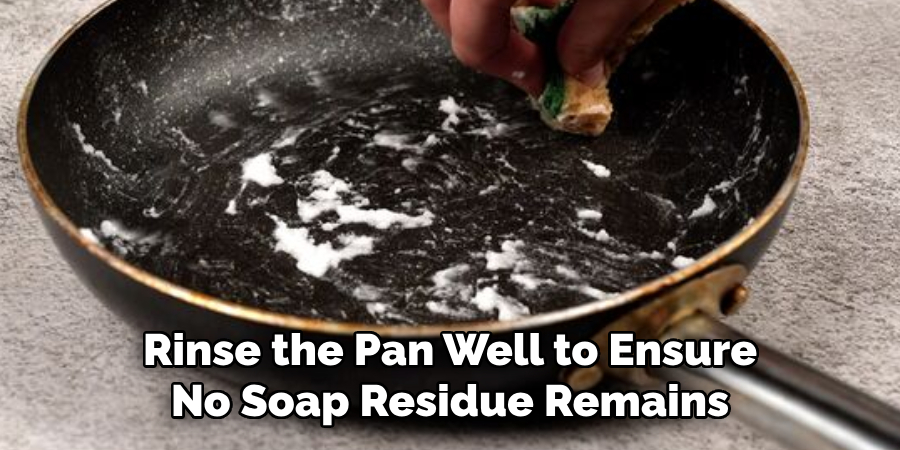
Avoid Harsh Scrubbers
Use a soft sponge or cloth to avoid scratching the ceramic surface when cleaning. Harsh scrubbers can leave scratches on the ceramic, which, over time, can reduce the pan’s non-stick properties. By handling the pan with care, you ensure it remains in optimal condition for seasoning.
Applying the Oil to the Ceramic Pan
Choosing the Right Oil
Choosing the correct oil is vital to the seasoning process. Opt for a high smoke point oil such as vegetable, canola, or flaxseed. These oils are less likely to burn or smoke at the temperatures required for seasoning, making them ideal for creating an effective non-stick layer.
Apply a Thin Layer
Pour a small amount of oil, approximately one teaspoon, into the pan. Use a paper towel or soft cloth to rub the oil evenly over the entire surface of the pan, including the sides. This technique ensures that the oil is distributed uniformly, laying the groundwork for a consistent seasoning layer.
Remove Excess Oil
After applying oil, diligently wipe off any excess with a clean paper towel. It is important to leave a very thin, even layer of oil on the surface. Too much oil can lead to a sticky residue or cause uneven seasoning, while a thin layer facilitates a smooth, effective seasoning that enhances the pan’s non-stick properties.
How to Season Ceramic Pan: Heating the Pan for Seasoning
Stovetop Method
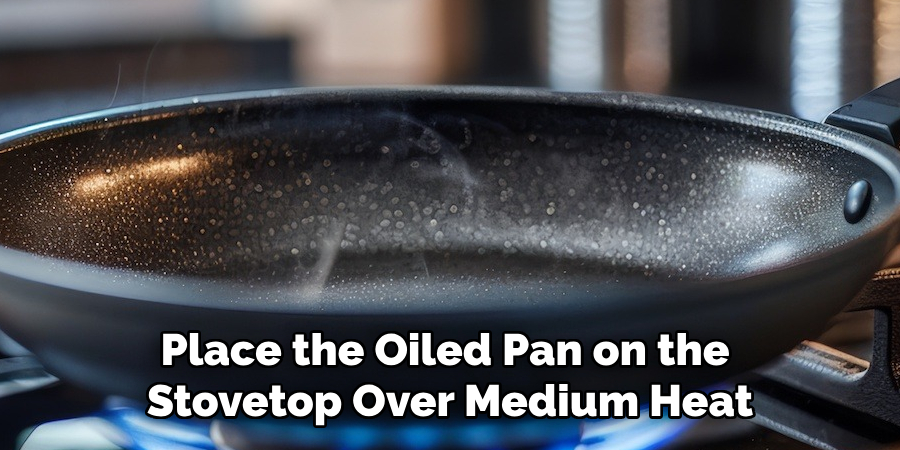
To season your ceramic pan using the stovetop method, place the oiled pan on the stovetop over medium heat. Allow it to heat for 2-3 minutes. As the pan heats up, you may notice a slight shimmer on the surface of the oil; this indicates the oil is bonding to the ceramic surface. This bond enhances the ceramic pan’s non-stick properties, ensuring better cooking performance. It is crucial to monitor the heat carefully to avoid overheating, which can cause damage to the ceramic surface. Once the heating process is complete, allow the pan to cool on the stovetop until it is safe to touch. This cooling period is vital, allowing the oil to solidify and forming a protective layer over the ceramic.
Oven Method (Alternative)
Alternatively, the oven method can be employed for a more even seasoning process. Start by preheating your oven to 300°F (150°C). Place the oiled pan upside down on an oven rack, positioning a baking sheet below to catch any drips. This method utilizes prolonged exposure to heat to seep the oil into the microscopic pores of the ceramic, forming a robust, non-stick layer. Allow the pan to bake for 30-60 minutes. Once the time has elapsed, turn off the oven and let the pan cool completely inside before removing it. This gradual cooling process helps ensure that the ceramic bonds effectively with the oil, maximizing the pan’s non-stick properties.
Repeat if Necessary
If the surface of your ceramic pan feels rough or doesn’t exhibit the smoothness expected, you may need to repeat the oiling and heating process. A second round of seasoning can help achieve a more uniform and effective non-stick layer. By attentively monitoring the oil application and heat exposure, you can ensure that the pan develops a durable coating that enhances its usability and extends its lifespan. Repeat these steps as necessary until the desired surface quality is attained.
Cooling and Storing the Pan
Let the Pan Cool Naturally
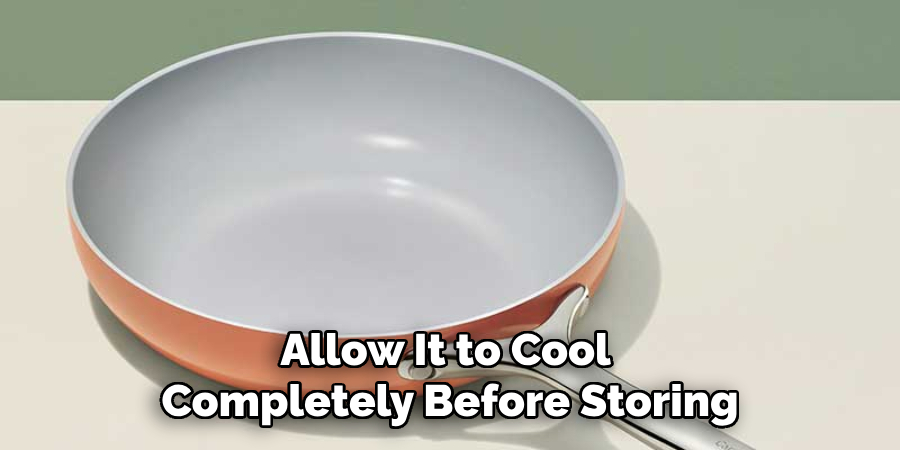
Once the pan has been heated and seasoned, allow it to cool completely before storing. Avoid rinsing it with cold water right away, as this can cause thermal shock and damage the ceramic surface.
Inspect the Non-Stick Surface
After cooling, run your hand over the surface of the pan. It should feel smooth and slightly slick, indicating a well-seasoned surface. This texture is crucial for effective non-stick performance during cooking.
Store with Care
To maintain the seasoned surface, store the pan in a safe location where it won’t be scratched by other cookware. Place a soft cloth or paper towel between stacked pans to protect the surface. Proper storage ensures that the non-stick layer remains intact, prolonging the pan’s usability and effectiveness in the kitchen.
Maintaining the Seasoning on Your Ceramic Pan
Use Gentle Cleaning Methods
To ensure the longevity of the seasoning on your ceramic pan, it’s crucial to clean it carefully after every use. Hand wash the pan with mild dish soap and a soft sponge to prevent any damage. Avoid metal scrubbers or harsh abrasives, as they can strip away the seasoning and harm the ceramic surface, reducing its non-stick properties.
Re-season as Needed
The seasoning on your pan may gradually wear off, particularly with frequent usage. If you start observing food sticking more often or notice the surface looking dull and lackluster, it may be necessary to repeat the seasoning process. Consistently maintaining the pan’s seasoning helps preserve its non-stick quality and overall performance.
Avoid High Heat and Metal Utensils
While ceramic pans are known for their durability, they function best under low to medium heat settings. Excessively high temperatures can damage the non-stick surface. To further protect the ceramic coating, always use wooden or silicone utensils, which are less likely to cause scratches compared to metal tools.
Avoid Cooking Sprays
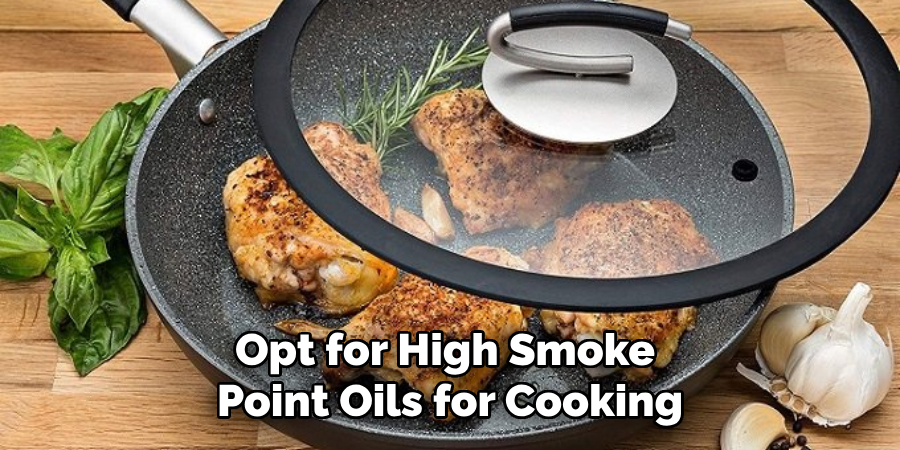
Opt for high smoke point oils for cooking, as cooking sprays can accumulate and leave a sticky residue that is challenging to clean off. The right oils help maintain the integrity of the non-stick surface, ensuring easy cooking and cleaning.
Frequently Asked Questions (FAQs) About Seasoning Ceramic Pans
Why Is Seasoning Necessary for Ceramic Pans?
Seasoning a ceramic pan is essential to enhancing its non-stick properties. It forms a protective layer of oil on the surface, which prevents food from sticking and makes cleaning easier.
How Often Should I Season My Ceramic Pan?
The frequency of seasoning depends on how often you use your pan. For optimal performance, consider re-seasoning every few months or whenever you notice food starting to stick more frequently.
Can I Use Any Type of Oil for Seasoning?
For seasoning, it’s best to use oils with a high smoke point, such as canola, grapeseed, or vegetable oil. These oils withstand the heating process better, helping form a durable non-stick layer.
Is It Safe to Use a Ceramic Pan in the Oven for Seasoning?
Yes, using the oven method is a safe and effective way to season your ceramic pan. Just ensure the pan is oven-safe and follow the proper temperature guidelines to avoid damage.
Can I Wash My Seasoned Pan in the Dishwasher?
Hand washing is recommended for seasoned ceramic pans to preserve the non-stick layer. Dishwashers can be too harsh and may strip away the seasoning over time.
Conclusion
Understanding how to season ceramic pan is pivotal in unlocking both their high performance and longevity. Applying a thin, even layer of oil and heating creates a non-stick surface that enhances cooking efficiency and makes cleaning effortless. Regular seasoning is key to maintaining this protective layer, and with each cycle, your pan’s durability is significantly extended.
The process, while straightforward, delivers profound benefits, ensuring your ceramic pan remains a reliable kitchen tool for years to come. You uphold the integrity of the non-stick surface by integrating gentle cleaning practices, using the right oils, and avoiding metal utensils. Following these maintenance techniques allows you to enjoy perfect cooking results consistently and derive long-term satisfaction from your culinary investments. Prioritize these steps and relish in your well-seasoned ceramic pan’s convenience and lasting performance.
Specialization:
- Master of wheel-throwing, hand-building, and advanced glazing techniques
- Focus on creating both functional pottery and decorative art pieces
Recognition:
- Celebrated by collectors and art enthusiasts for creating one-of-a-kind pieces that blend artistry with functionality
- Participates in local and national exhibitions, earning accolades for his innovative designs and craftsmanship
Passion:
- Deeply committed to exploring and pushing the boundaries of ceramic artistry
- Continuously experiments with new materials, firing techniques, and artistic concepts to evolve his craft
Personal Philosophy:
- Believes in the transformative power of art, aiming to evoke emotions and connections through his ceramic creations
- Advocates for sustainability in ceramics, using eco-friendly materials and practices whenever possible


